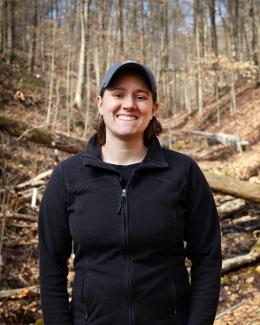Abstract
We used a natural temperature gradient in Walker Branch, a spring-fed forested stream in eastern Tennessee, USA, to examine the influence of temperature on organic-matter decomposition. In this stream, upstream sites are warmer than downstream sites in winter and are cooler than downstream sites in summer. We used a cotton-strip assay to examine breakdown of a substrate of uniform quality (95% cellulose) along the temperature gradient monthly for 2 y and litter bags to examine the interactive effects of leaf-litter quality (labile red maple [Acer rubrum] and tulip poplar [Liriodendron tulipifera], and less labile white oak [Quercus alba]), invertebrates, and temperature on breakdown rates along the downstream temperature gradient for 90 d in winter. Cotton-strip tensile loss and leaf-litter breakdown rates were highly variable. Tensile-loss rates likely were driven by a combination of daily and diel temperature, discharge, streamwater nutrients that varied seasonally and spatially along the temperature gradient. Leaf litter breakdown rates tended to be faster in warmer upstream sites (red maple = 0.0452/d, tulip poplar = 0.0376/d, white oak = 0.0142/d) and slower in cooler downstream sites (red maple = 0.0312/d, tulip poplar = 0.0236/d, white oak = 0.0107/d), and breakdown rates were positively correlated with total invertebrate density. Temperature sensitivity of decomposition was similar among the 3 litter types. These results highlight the high degree of spatial and temporal heterogeneity that can exist for ecosystem processes and their drivers. Quantifying this heterogeneity is important when scaling functional metrics to stream and watershed scales and for understanding how organic-matter processing will respond to the warmer streamwater temperatures expected as a result of global climate change.


